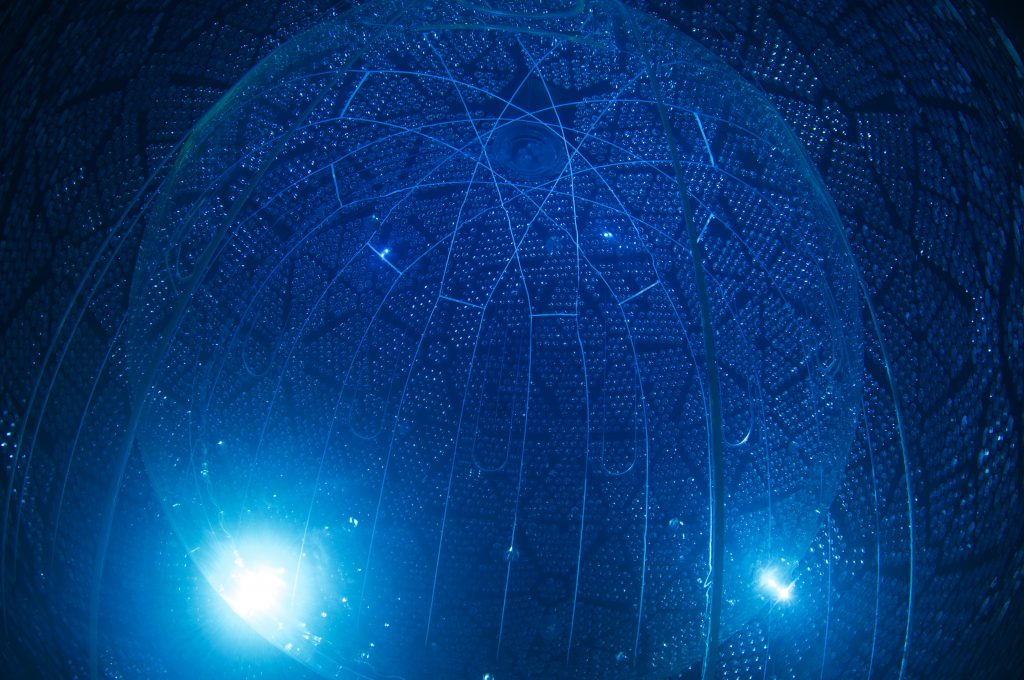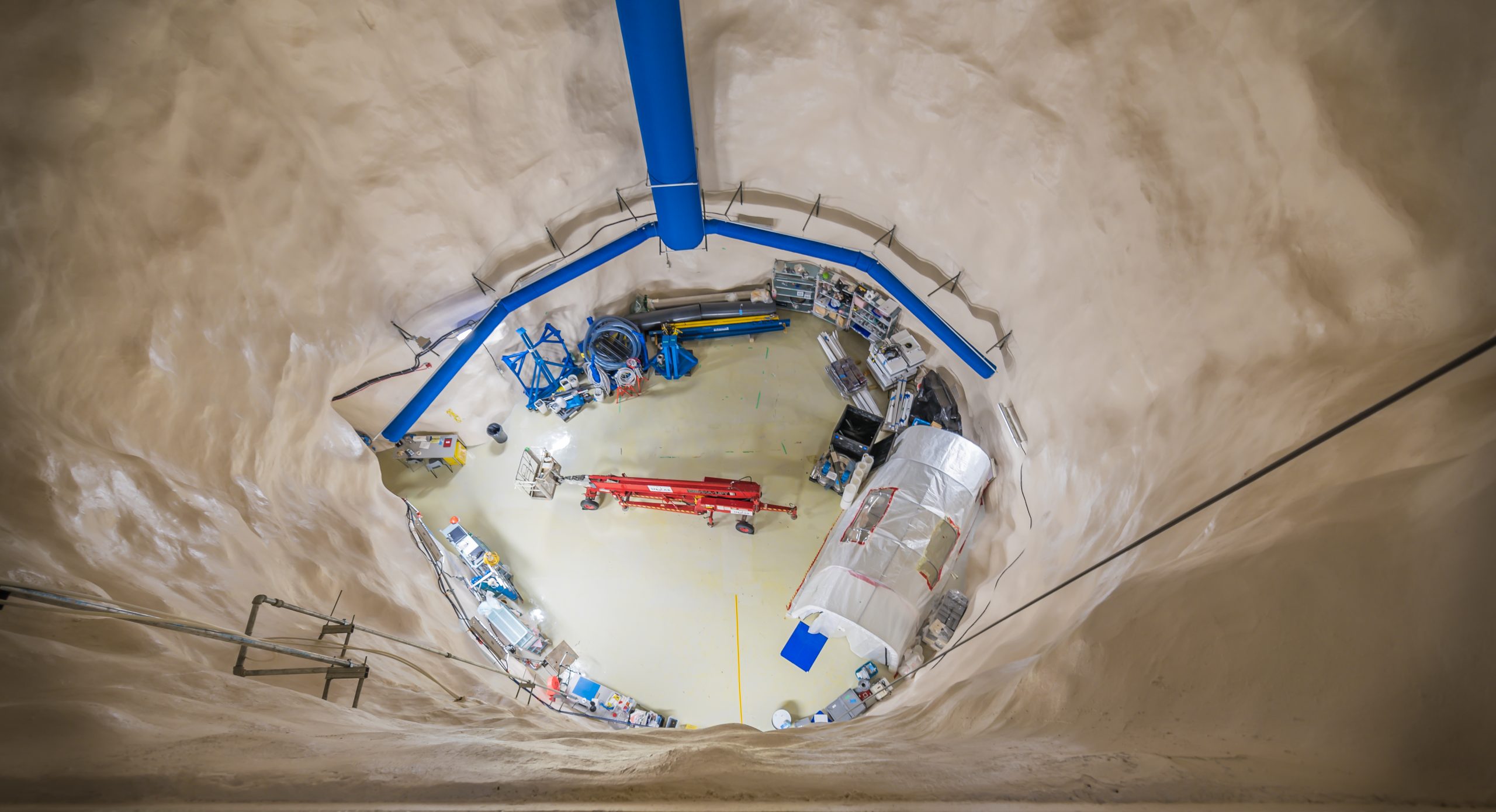
12 days of SNOLAB science
SNOLAB once again marked the holiday season by sharing 12 Days of SNOLAB Science – an opportunity to share some lesser-known facts about the lab itself, and to celebrate the scientific achievements of the past year!
Day 1: One large-scale cavern awaiting an experiment 🚀
SNOLAB’s cleanroom laboratory located 2km underground is a highly desirable location for particle astrophysics experiments from around the world. As a result, space at SNOLAB is carefully filled with the most appropriate experiments based on the direction and needs of the scientific community. The Cryopit is an impressive 15m cavern and is the remaining large, unallocated hall at SNOLAB. In May of 2023, SNOLAB hosted the 2nd International Summit on the Future of Neutrinoless Double Beta Decay which was focused on mapping out the future of this emerging field that could dramatically advance our understanding of physics and the cosmos.
The summit brought together international stakeholders and researchers from around the world to discuss a path for the progression of this scientific priority and the planning of large-scale experiment in the SNOLAB Crypoit. Read the full Summit story here.
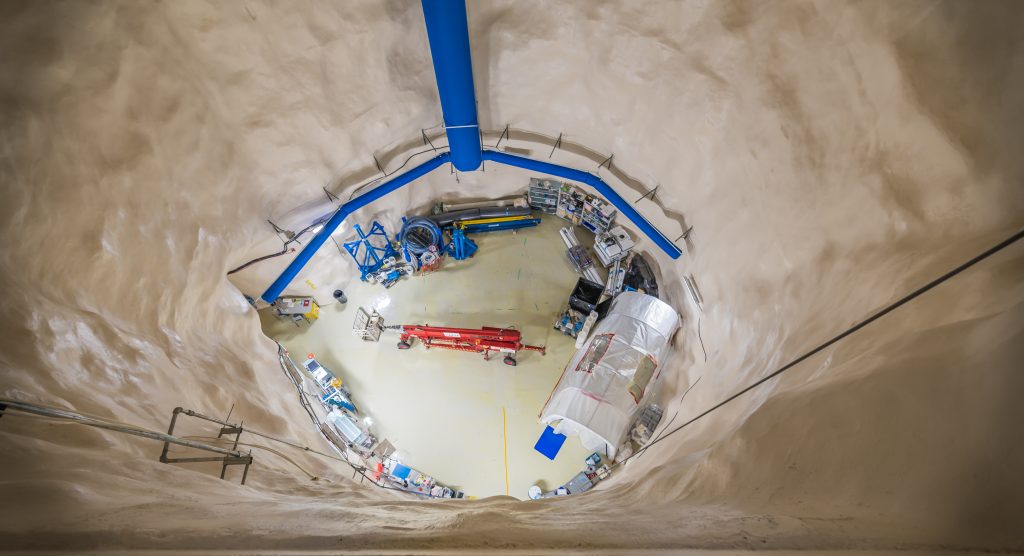
Day 2: Two new murals 🎨
This year SNOLAB welcomed two murals as part of our surface building renewal project. The first-floor area now features a large mural by Anishinaabe artist and educator Will Morin, titled Agaashiinyi: It is Small. The piece features neutrinos spiraling out from a dream catcher and draws parallels between astroparticle physics and Indigenous knowledge. The 2nd floor common area now has an impactful mural, titled Star Stories, that was created by Mishiikenh Kwe (Autumn Smith), and features elements of stories told by her grandmother growing up.
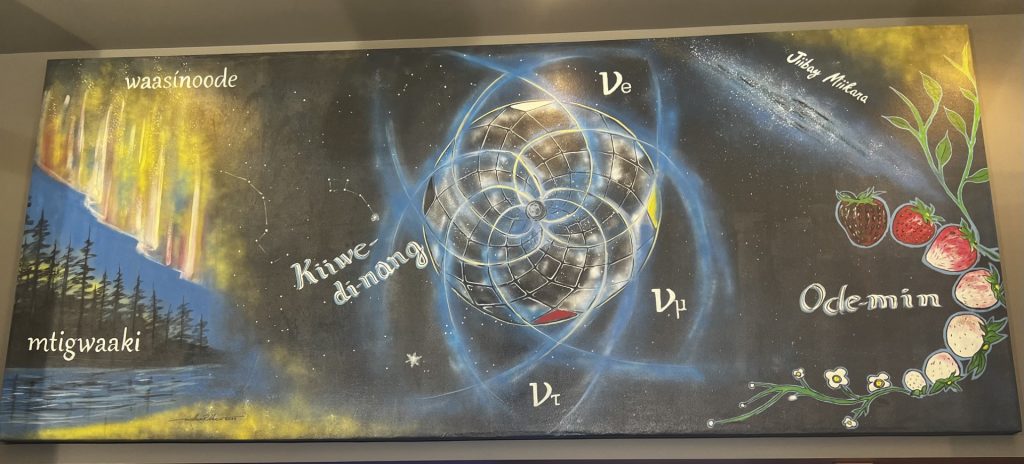
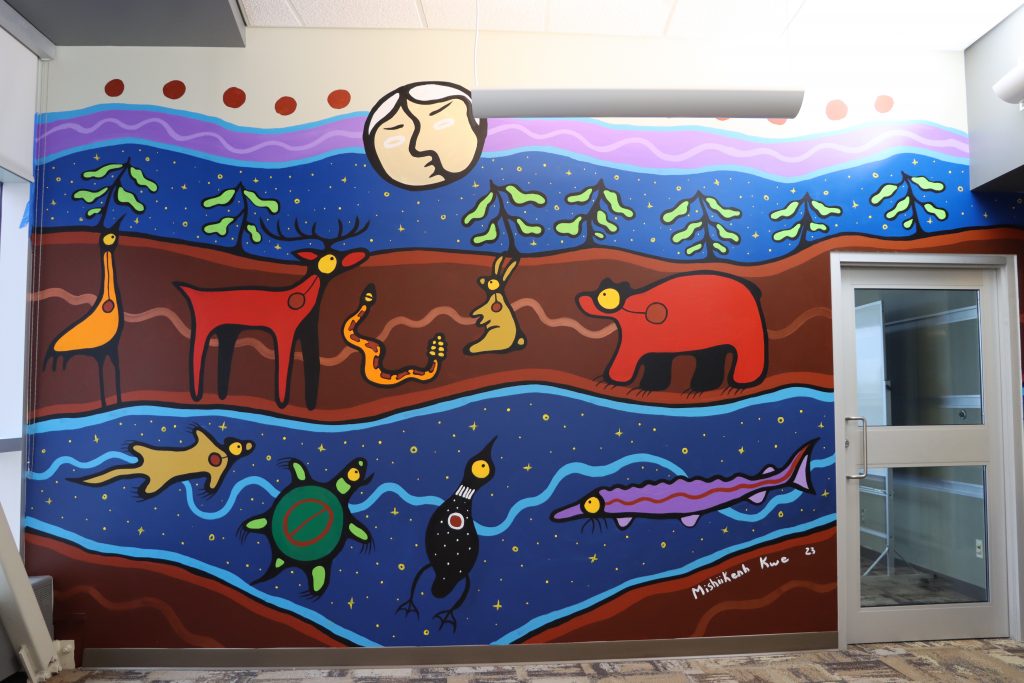
Day 3: 3” of shotcrete in the lab 📏
Shotcrete in the lab serves many purposes. The primary purpose of this spray on concrete in the mine is to provide stable ground control. This supports the rock caverns and tunnels and ensures the rock stays cemented in place despite rock movement that happens within an active mine. In addition to providing ground support, the shotcrete also provides a barrier between the norite rock dust and the clean lab space, reducing radioactive backgrounds and dirt even further in the lab. The shotcrete in the new part of the lab was troweled smooth so that the walls are easier to keep free of dust, while in the older part of the lab, where the original SNO experiment was located, has more of a pebbled texture.
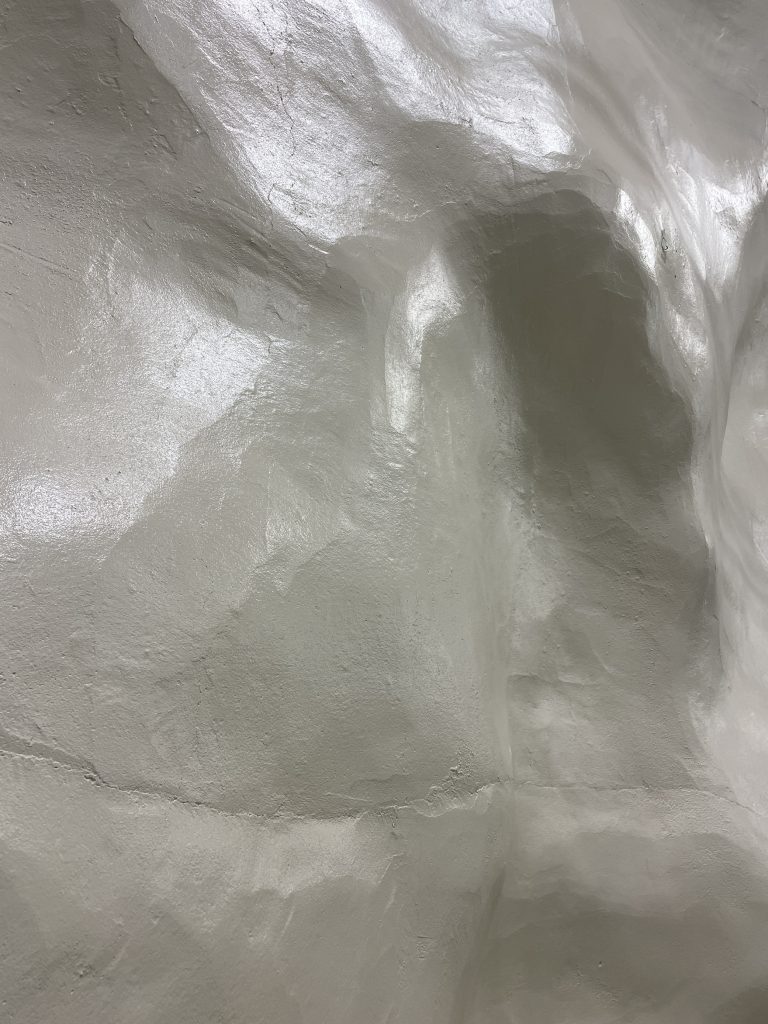
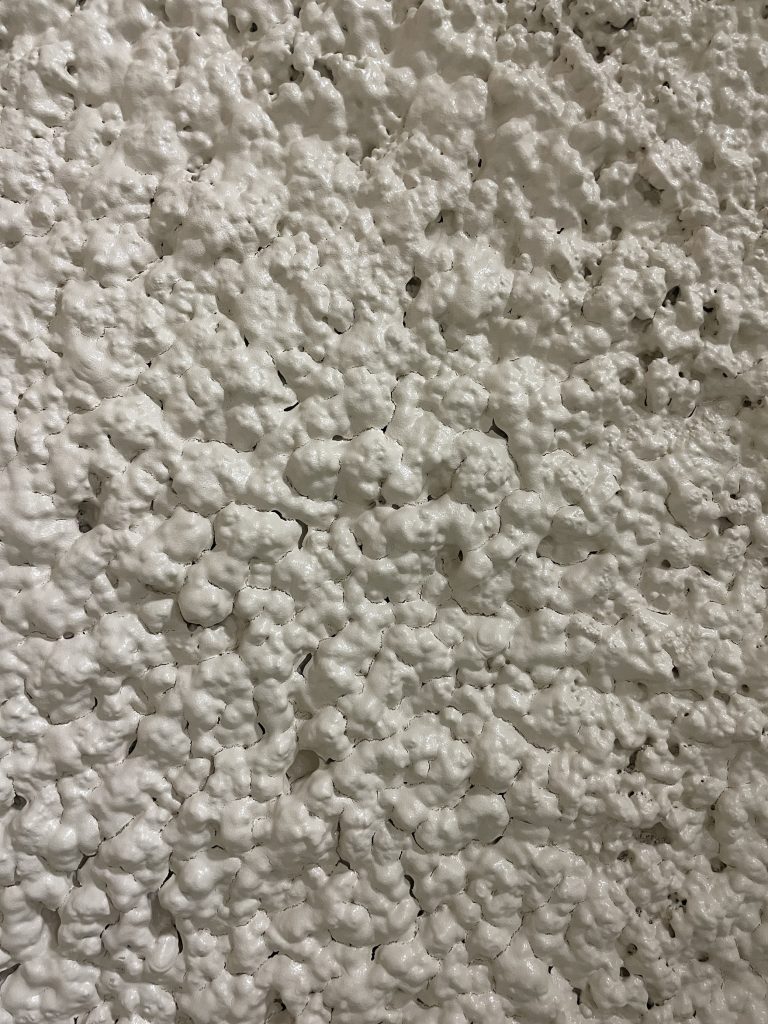
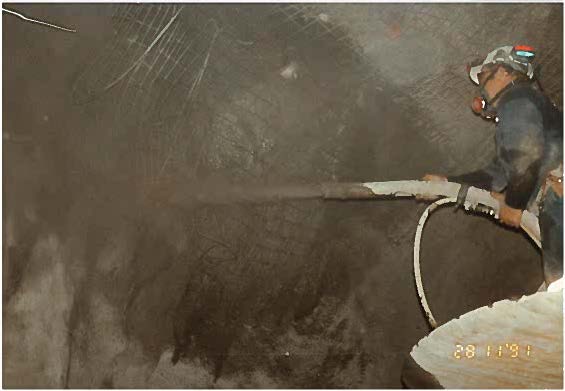
Day 4: Four batches of BisMSB 🧪
SNO+ recently added 4 batches of BisMSB to their detector. The neutrino experiment uses BisMSB as a secondary wavelength shifter that is added to the liquid scintillator, Linear Alkyl Benzene (LAB). Four batches of BisMSB, each approximately 500 grams, were dissolved into the scintillator to improve the visible light yield, making the photosensors within SNO+ more sensitive than ever before. BisMSB increases the wavelength into the UV range, making a fluorescent purple/blue glow under ultraviolet light.
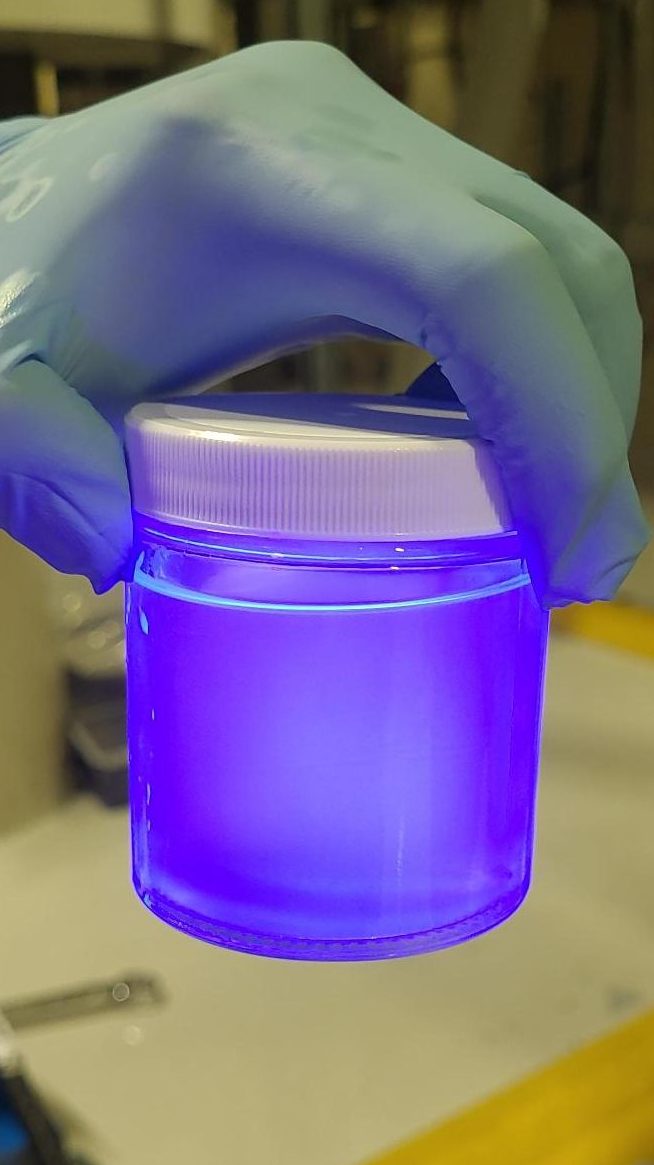
Day 5: 5,000kms of travel for SuperCDMS crystals 🚚
The detector towers that will be located at the heart of the SuperCDMS experiment had quite the journey to SNOLAB. The detectors were constructed at SLAC National Accelerator Laboratory in California and made the long journey to Sudbury. Instead of travelling by plane where the detectors would be exposed to more cosmic radiation, the detectors were delivered by truck – even choosing a path to avoid higher elevations. The detectors, now safely underground, are undergoing testing in the CUTE facility to prepare them for deployment in the SuperCDMS experiment. Read more about the journey of the detectors here.
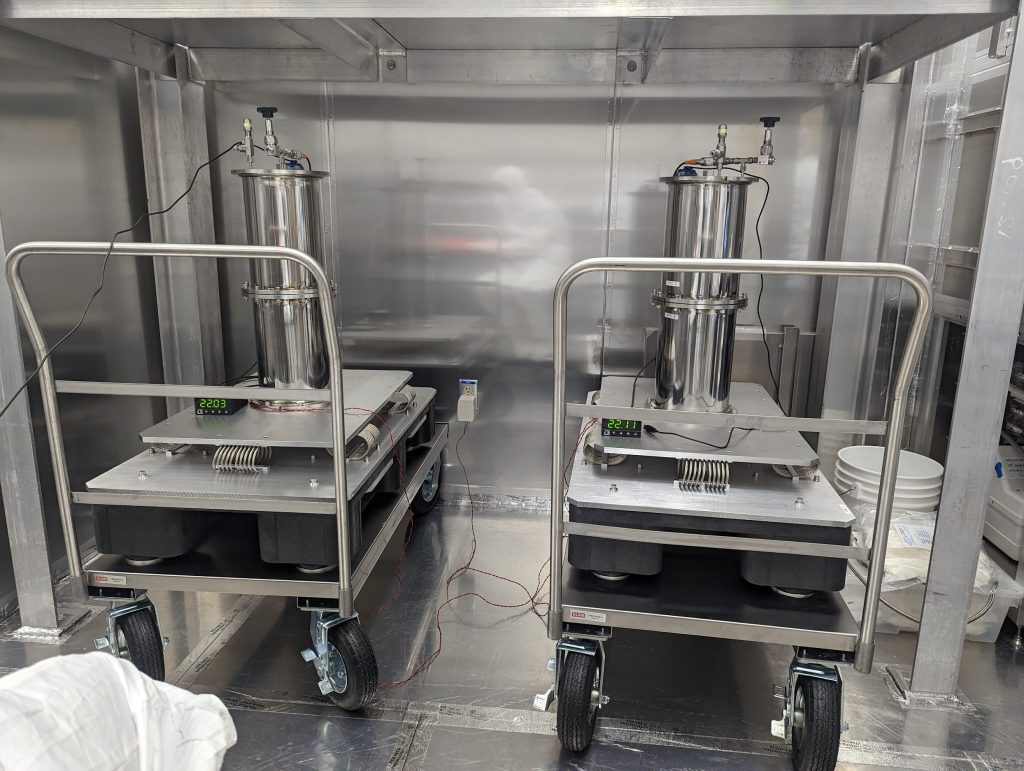
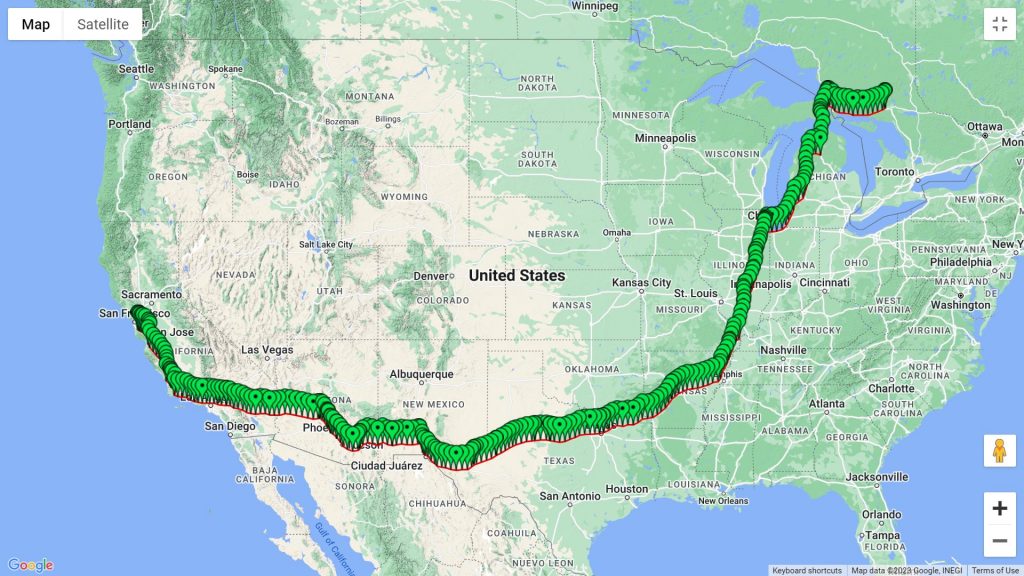
Day 6: 6am start time 🕕
SNOLAB isn’t a 9am-5pm job! Our underground work schedules vary during the year, and we work closely with our mining host, Vale, to schedule cage times. This usually means that SNOLAB staff and users have an early day that starts around 6 in the morning and finishes around 4 in the afternoon. This early start time allows for staff to walk to the lab, shower, and get their morning coffee in – all while still having time for a full work day!
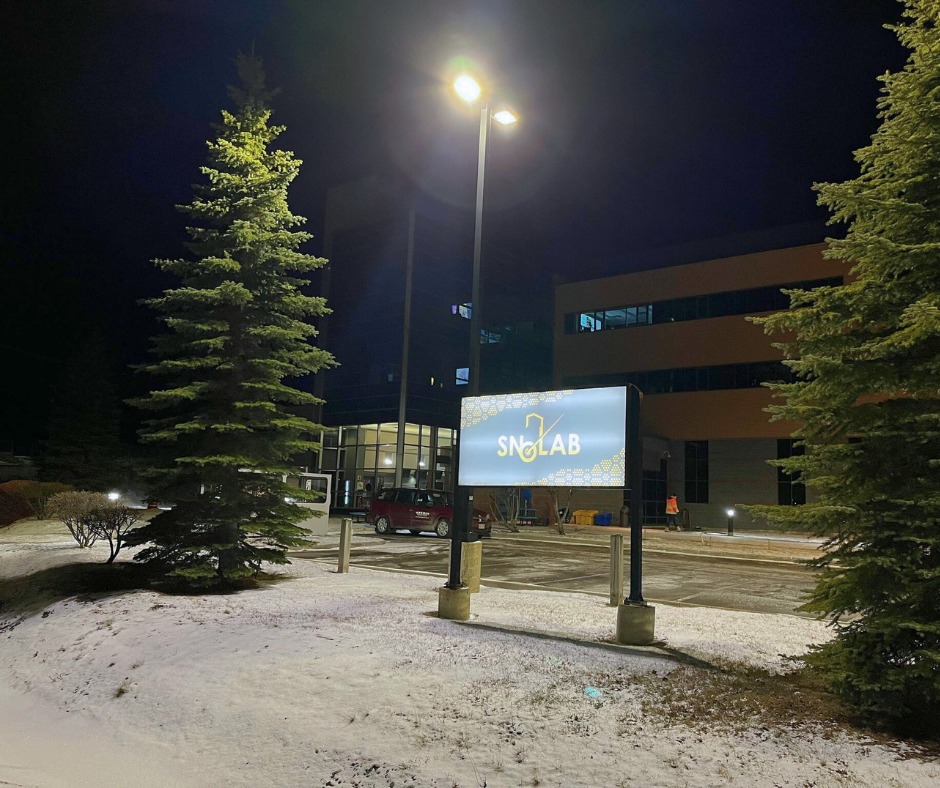
Day 7: Seven HPGe counters 🧑🔬
Understanding every component of an experiment is crucial – down to each atom. The low background lab has an impressive array of High Purity Germanium (HPGe) counters. These counters allow experiments to measure the background radioactivity of their materials along with other items in the lab. These measurements can guide material choices and ensure the purity of experiment components. In 2023, SNOLAB scientists counted 128 samples for 12 different projects.
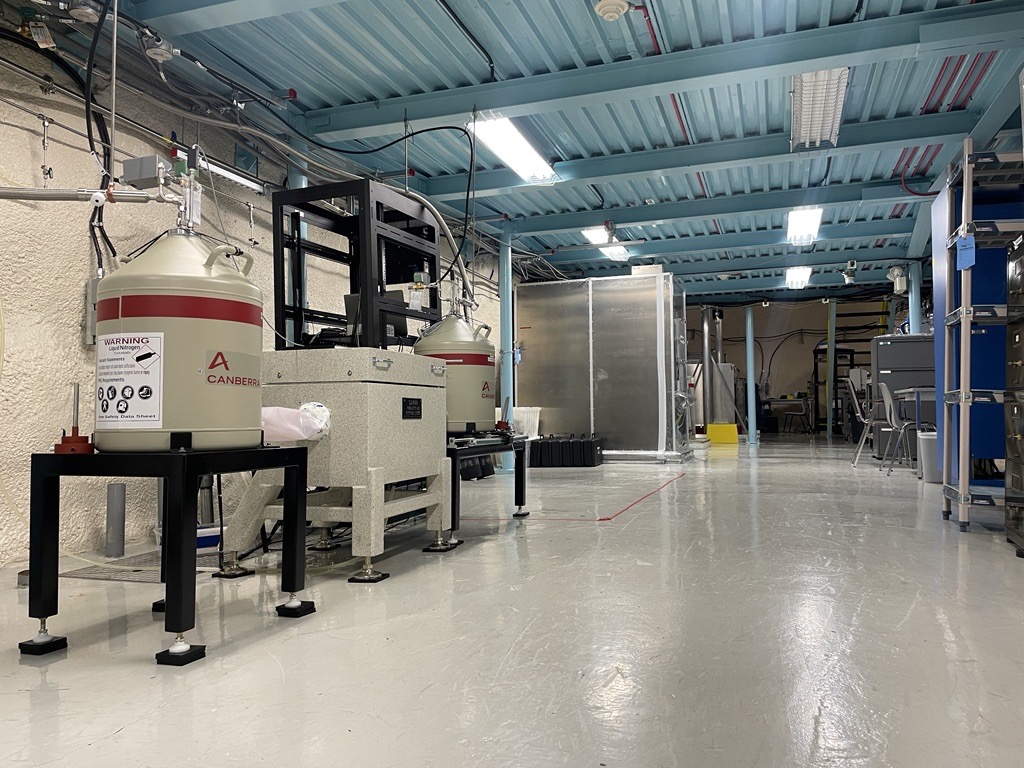
Day 8: Eight flights of stairs in the Cube Hall 🚶
Day 8 is dedicated to leg days. Staff and visiting facility users that need to walk down to the bottom of the Cube Hall are in for quite the workout on the way back up! The second largest of the three caverns at SNOLAB, this space currently hosts 2 experiments, with a third being built. At a whopping 8 flights of stairs, this journey would bring you from the bottom of the DEAP-3600 experiment, past the deck, or top of the experiment, and all the way to the observation deck where you enter the rest of the lab space. #Gains #LegDay
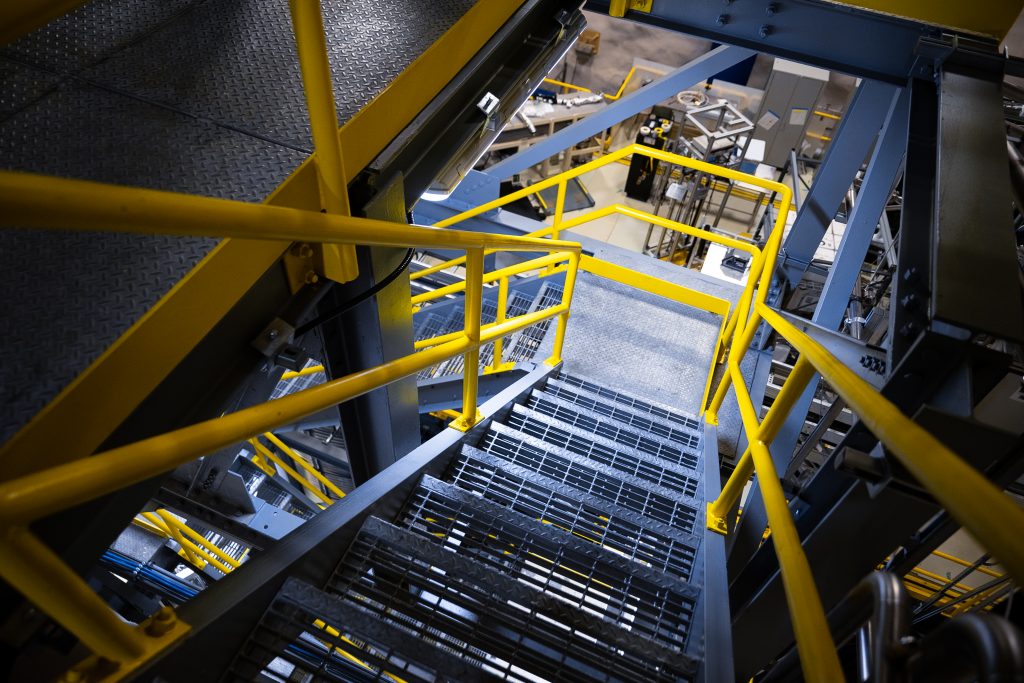
Day 9: 99% live time for HALO 🔌
The HALO experiment is patiently waiting for a supernova to take place in our Milky Way galaxy 99% of the time. Supernovae happen frequently in the universe but only about 3 times per century in our own galaxy. The HALO experiment was carefully designed to ensure that the experiment is operating for as much as possible – they want to be sure the detector is running if a supernova takes place! Most of the data collection and computer systems are duplicated, so in the case of a failure in one system, the other system can take over seamlessly to ensure supernova monitoring continues.
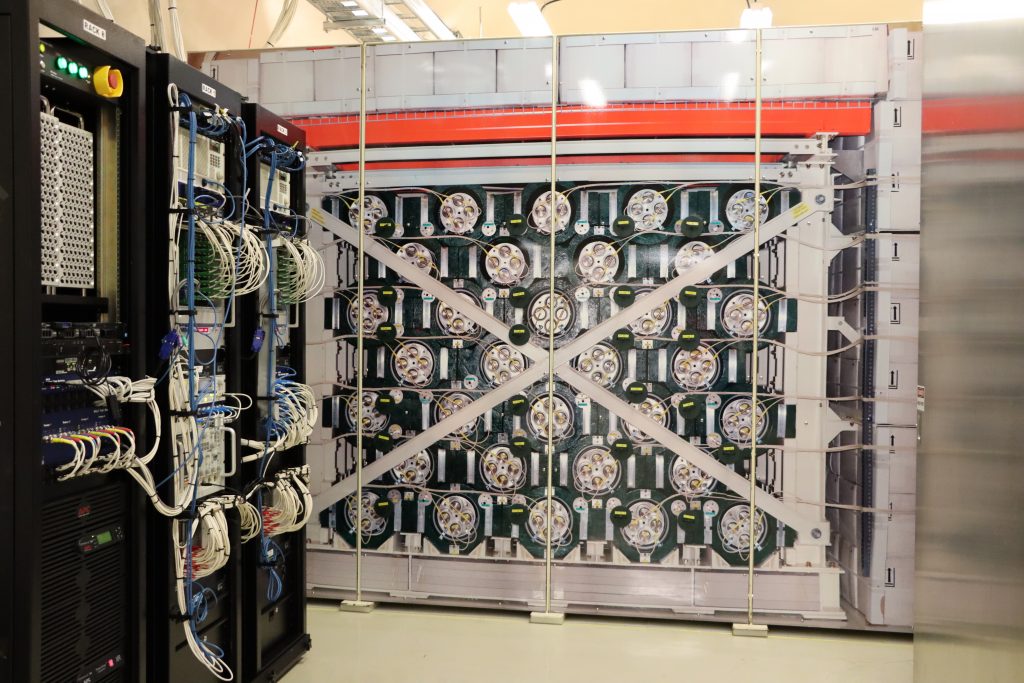
Day 10: Ten air exchanges per hour 💨
Operating as a class-2000 cleanroom, SNOLAB air filtration plays a critical role in reducing the number of particles to maintain the status of the class-2000 cleanroom. This intricate system relies on HEPA filters that pick up small particulates and filters the entire volume of the lab air 10 times an hour. Both the surface and underground clean lab spaces at SNOLAB have ~10 air exchanges per hour!
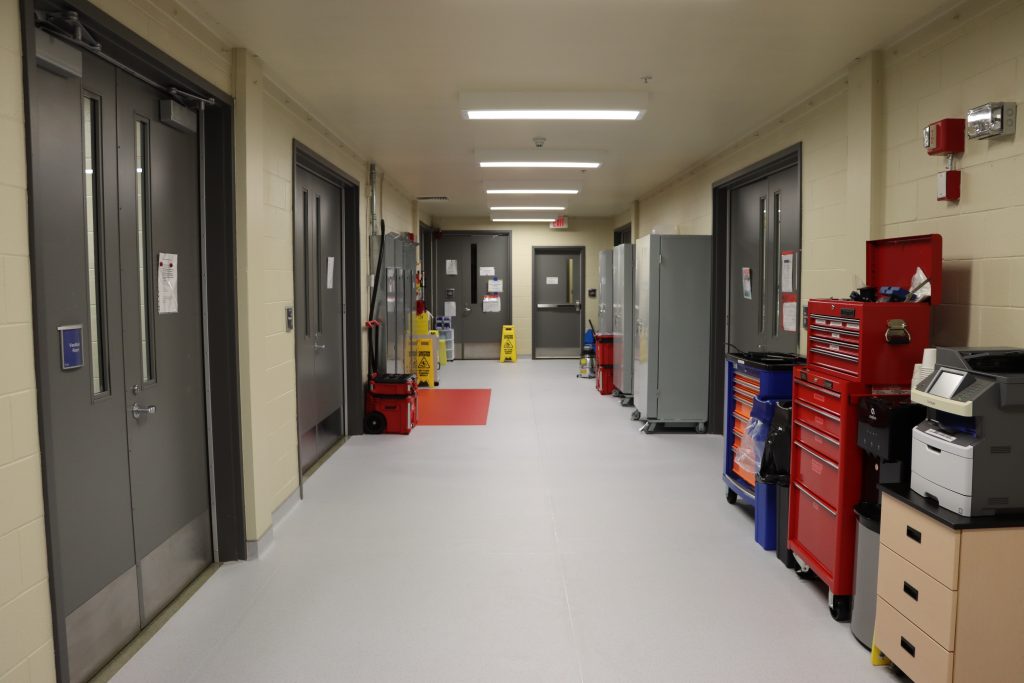
Day 11: Eleven bells-a-ringing 🔔
At SNOLAB we travel on a mining elevator, called the cage, to get to the 6800ft level approximately 2km underground. Travel is controlled by the cage tender on board the cage. Using a series of bell signals the cage tender can communicate operation instructions to the control team including which level the cage needs to travel to next. To get to SNOLAB’s level the signal is 6-5. That means 6 bells, followed by a short pause, and then 5 more bells, for a total of 11 rings. This communicates that we are in the 5th level in the 6000ft series.
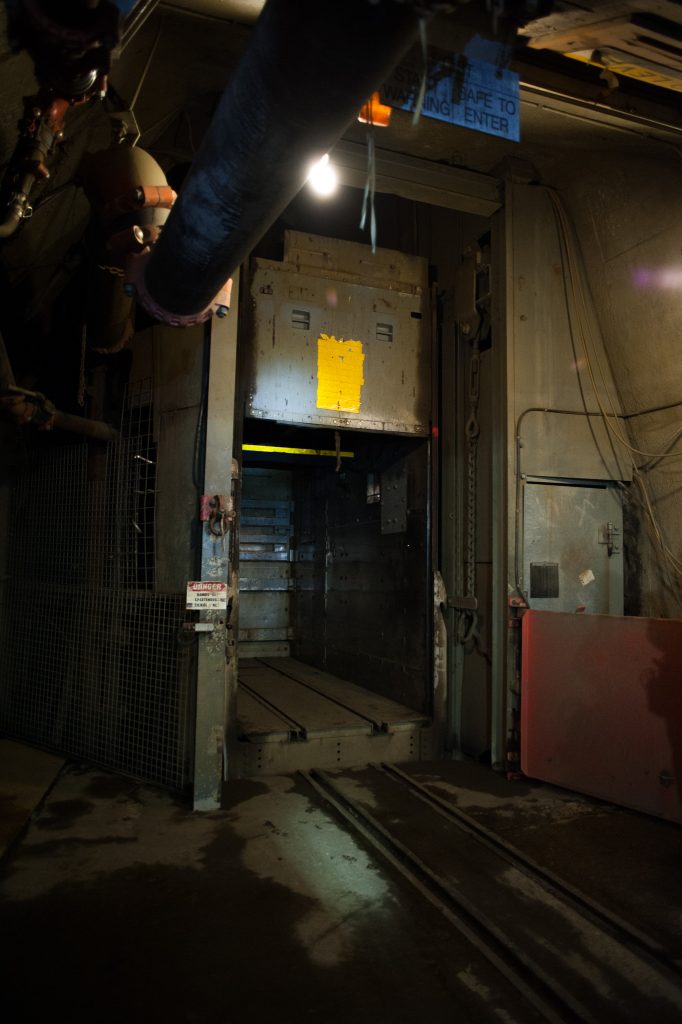
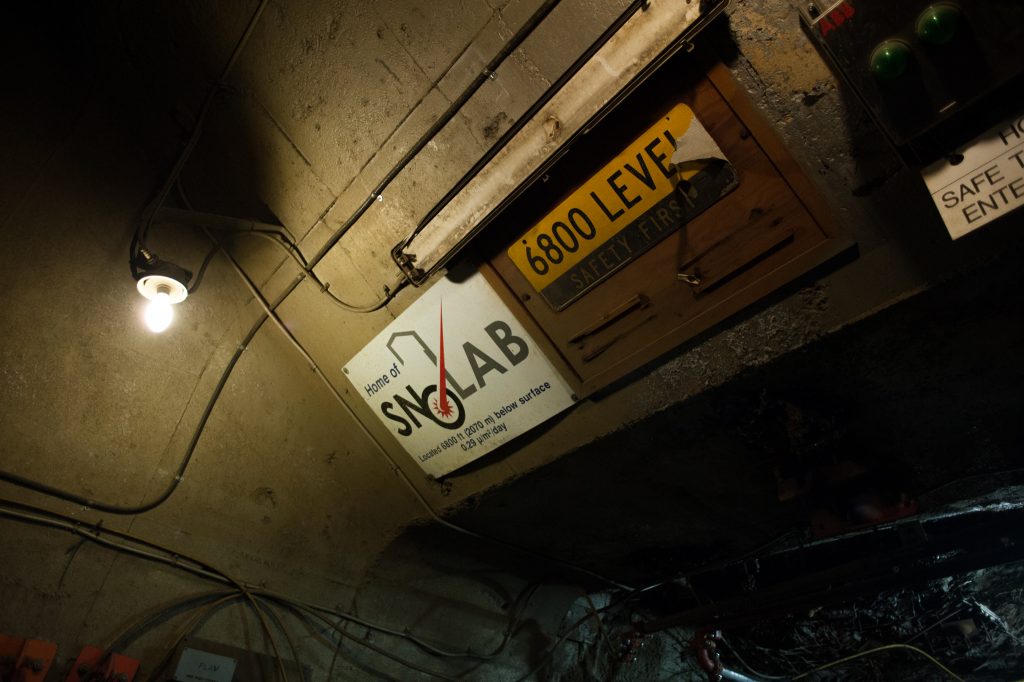
Day 12: 12m acrylic vessel in SNO+ 📏
The SNO+ experiment has an inner vessel made of acrylic that is 12 metres in diameter. The acrylic vessel contains 780 tonnes of liquid scintillator along with two wavelength shifters: PPO and BisMSB. The experiment is looking for particle interactions that take place in the acrylic vessel and is surrounded by 9,362 photosensors. The main goal of this multipurpose neutrino experiment is to search for neutrinoless double beta decay.
